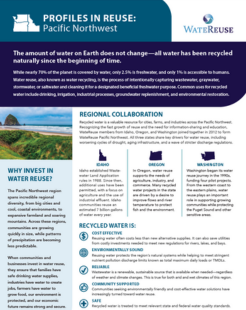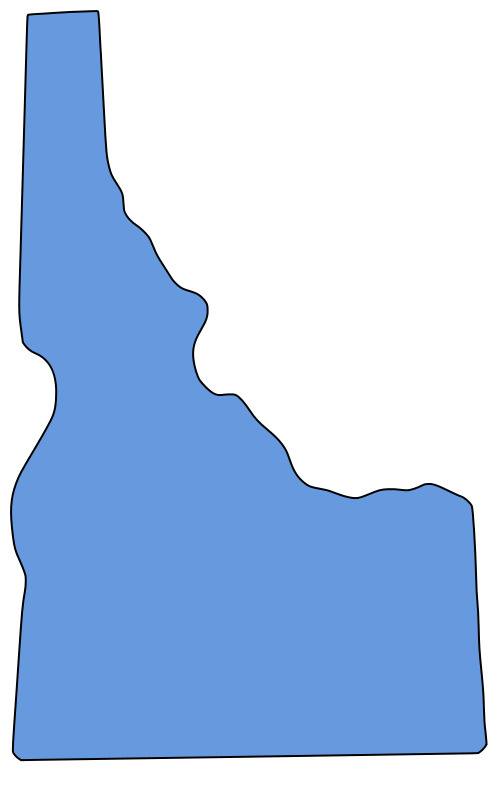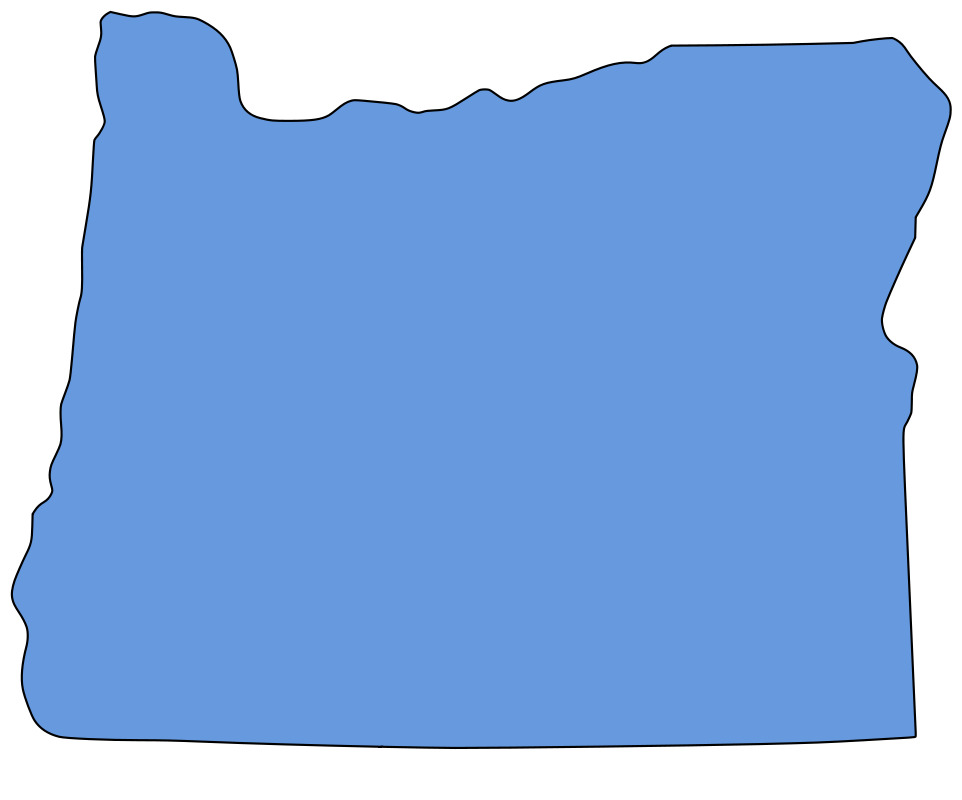About 30 reclaimed water facilities are operating in Washington State, with about one-third in eastern Washington and two-thirds in western Washington. Many more reclaimed water facilities are in various stages of planning, design, or construction. Design capacities range from less than 1 million gallons per day (mgd) to 21 mgd.
The drivers for reclaimed water facilities in Washington vary by facility and include discharge regulations, impaired water bodies with TMDL water cleanup plans, efforts to restore Puget Sound, water supply needs, wastewater treatment capacity needs, and opportunities due to upgrades or new facilities with advanced treatment technologies. As the state’s Water Reclamation and Reuse Standards were being developed in the 1990s, the state provided funding for four pilot projects, including the cities of Ephrata, Royal City, Sequim, and Yelm. Those initial pilot plants went on line between 1998 and 2000.
Today, water reuse in Washington includes agricultural, forest, golf course, turf, and urban landscape irrigation; street sweeping and dust suppression; toilet flushing; decorative fountains and ponds; commercial and industrial processes; and environmental uses such as groundwater recharge, aquifer storage and recovery, wetlands enhancement, and stream-flow augmentation.
The Washington State Legislature passed the Reclaimed Water Act, Chapter 90.46 of the Revised Code of Washington (RCW) in 1992. The Reclaimed Water Act and Chapters 90.48 and 90.82 RCW encourage the development and use of reclaimed water, require consideration of reclaimed water in wastewater and water supply planning, and recognize the importance of reclaimed water as a strategy within water resource management statewide. State standards were developed jointly by the state Departments of Ecology and Health in 1997. The two agencies jointly issue state reclaimed water permits. The state has been in the process of creating a new reclaimed water rule since 2006, but fell under a rulemaking moratorium in 2010. The process was reactivated in 2014, and should result in completed new regulations in 2016. Under the existing statute and guidelines, the owner of the reclaimed water facility receives an exclusive right to the use of that water. Reclaimed water is considered a new water supply and is recognized as a resource that can be integrated into state, regional, and local strategies to respond to population growth and climate change. The state also recognizes reclaimed water as an important mechanism for improving water quality by reducing discharge of treated wastewater effluent into Puget Sound and other sensitive areas.






